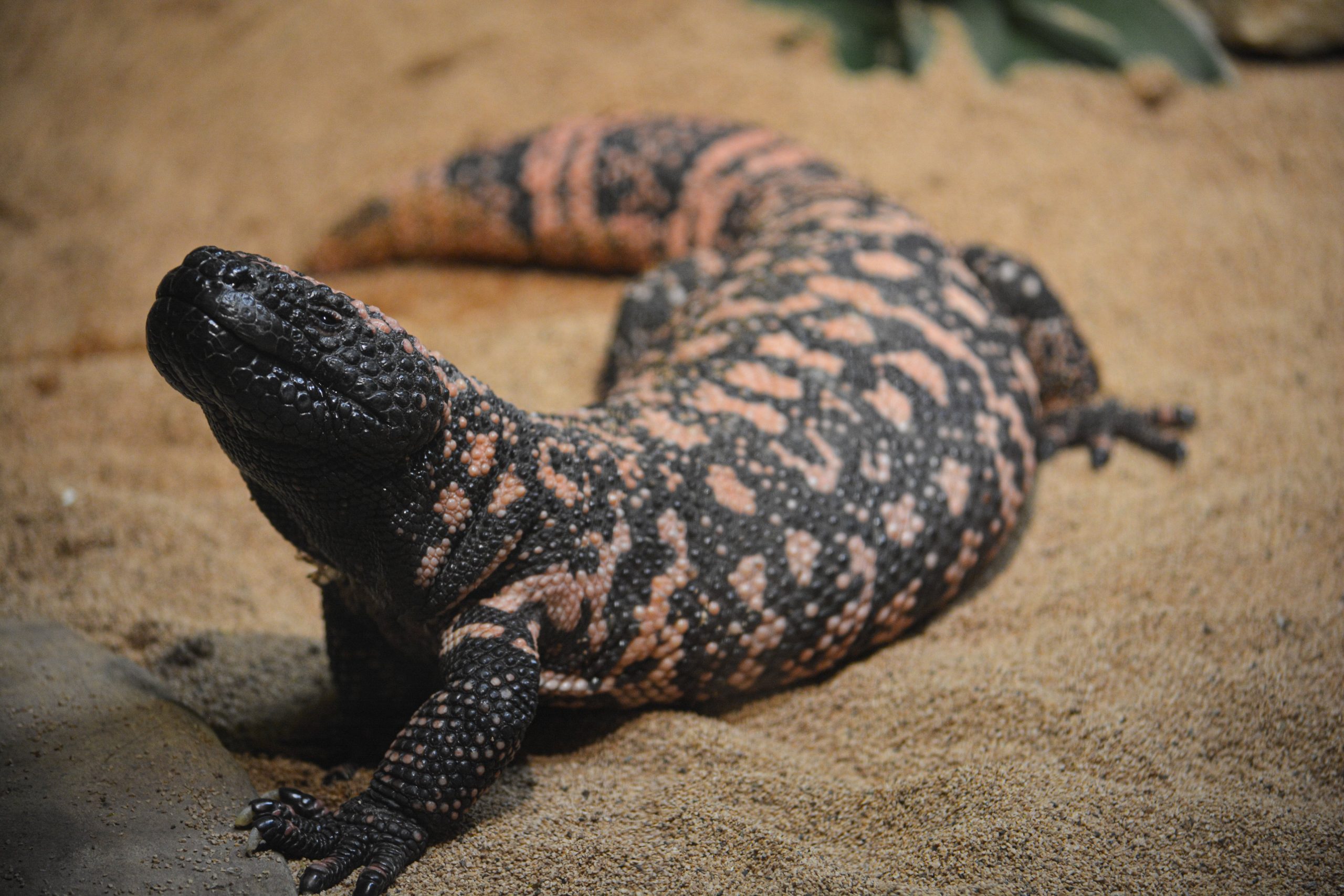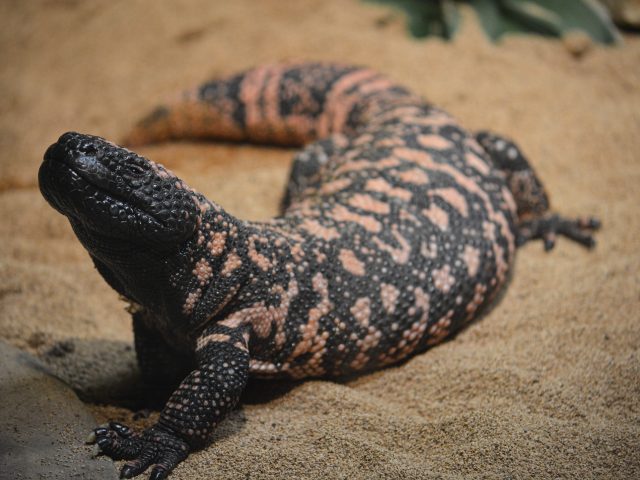Characteristics
The Gila monster’s body is squat and heavy with a large head. The scales have a granular surface, providing excellent camouflage through texture and color, which blends seamlessly with the desert sand and pebbles. Scales have the appearance of blue, hot pink, silver, pink, orange, baby blue, or yellow beads, laid down in intricate patterns. The Gila monster possesses large forefeet and short, but sharp claws, which are ideal for digging. The tail is short and thick, containing a fat store that enables it to survive periods of food shortage.
Behavior
Slow-moving and awkward, this lizard is unable to catch anything but eggs and newborn animals. It searches for nests of prey by following trails with its tongue and Jacobson’s organ (which is a special scent organ). The Gila monster’s bite contains venom that attacks the nervous system of its prey. The venom is strong enough to kill mammals and birds, but does not appear to be crucial for hunting, as most prey are small enough to be subdued with the jaws and teeth. Unlike other venomous reptiles, the venom flows from salivary glands into a groove on the teeth, making its way into the wound.
Did You Know?
- The Gila monster and its Mexican cousin, the Beaded Lizard, are the only known truly venomous lizards in the world.
- The Gila monster is named for the Gila River in Arizona.
- A synthetic version of a protein found in Gila saliva is used as a treatment for diabetes in humans.
Our Animals
Visit them in the Bird and Reptile House year-round.





